Gray-Scott Model at F 0.0140, k 0.0410
These images and movie demonstrate the behavior of the Gray-Scott reaction-diffusion system with σ=Du/Dv=2 and parameters F=0.0140, k=0.0410.
Spots grow with smooth outer edges and feathered inside edges, mostly annihilating when they meet each other. However, a few sharp-edged decay products spawn new wavefronts. For about the next 2500 tu the pattern resembles the classic petri dish Belousov-Zhabotinsky reaction. Gradually the defects (proto-spiral seeds) increase in number, so that by the 10,000 tu there are many small irregular wavefronts. Protospirals remain stationary until disrupted by the arrival of another wave.
Categories: Munafo ξ; Wolfram 3 (glossary of terms)
 increase F increase F
 | |||
 decrease k  |
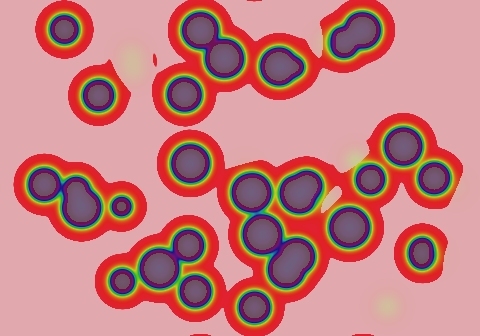
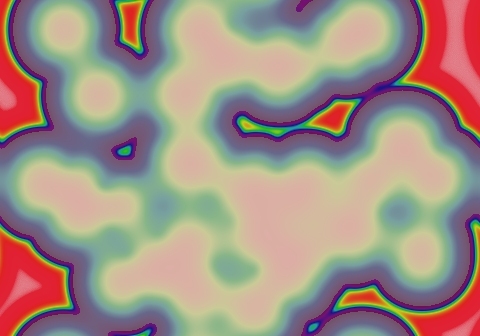
|
15 frames/sec.; each fr. is 26 iter. steps = 13 tu; 1800 fr. total (23,400 tu) |  increase k 
|
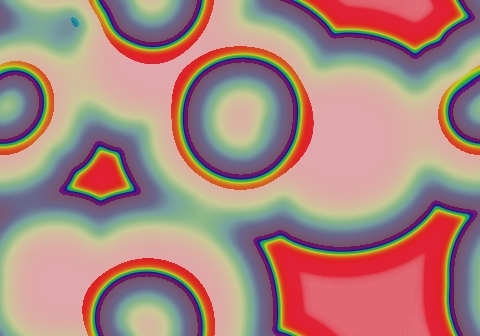
|
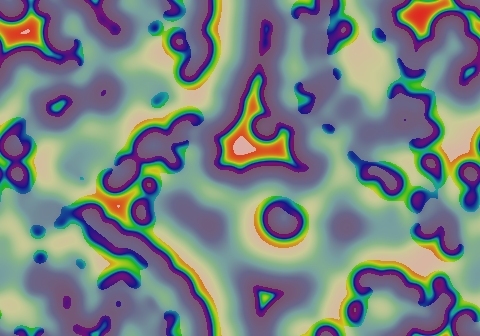
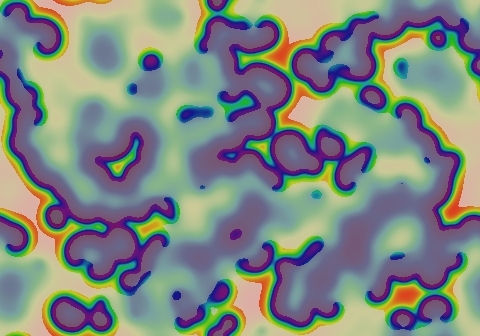
| ||
 decrease F decrease F
 |
In these images:
- Color indicates level of u, ranging from purple (lowest u values) through blue, aqua, green, yellow and pink/red (highest u values)
- Areas where u is increasing are lightened to a light pastel tone; where u is decreasing the color is vivid.
- In areas where u is changing by less than ±3×10-6 per tu, an intermediate pastel color is seen. This includes areas that are in steady state or equilibrium.
''tu'' is the dimensionless unit of time, and ''lu'' the dimensionless unit of length, implicit in the equations that define the reaction-diffusion model. The grids for these simulations use Δx=1/143 lu and Δt=1/2 tu; the system is 3.2 lu wide. The simulation meets itself at the edges (periodic boundary condition); all images tile seamlessly if used as wallpaper.
Go back to Gray-Scott pattern index
This page was written in the "embarrassingly readable" markup language RHTF, and was last updated on 2019 Jan 05.
 s.11
s.11